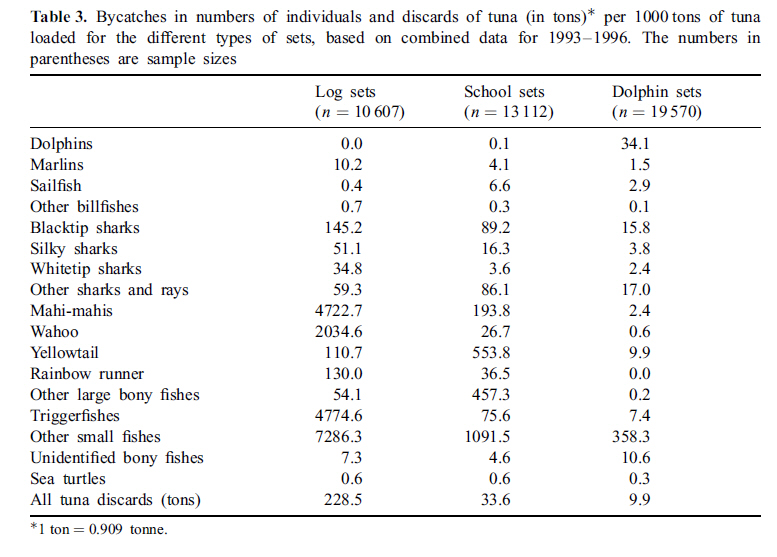If you do not know the story, many people were angered that tuna fishermen were killing dolphins. Many people urged them to do something about the number of dolphins killed, and eventually Dolphin-Safe Tuna was formed. That tuna is certified to not harm dolphins. The Dolphin sets find tuna where dolphins are whereas the Log sets and School sets find tuna using a floating object or locating them from a spotter plane. As SFS says:
If you do the math on this... you find that one saved dolphin costs 25,824 small tuna, 382 mahi-mahi, 188 wahoo, 82 yellowtail and other large fish, 27 sharks and rays, 1 billfish, 1,193 triggerfish and other small fish, and 0.06 sea turtles.The main point of this is that the dolphins that people are protecting are causing even more lives to be lost. While the debate could go on about the relative value of a dolphin versus a billfish, there are more things to consider. Dolphins are not that endangered. The main species are either Data Deficient or Least Concern while many species that are killed because of Dolphin-Safe Tuna are threatened with extinction.
So, what does this have to do with sharks? Many of the species of shark that are caught because of Dolphin-Safe Tuna are threatened while dolphins and their egos are not. I hope this image will clear things up:
To end, I would like to thank Chuck for his plug on Shark Links:
Speaking of new blogs and links, those of who have missed the sharks and snark of The Chum Slick should check out Shark Links for shark news and occasionally NSFW commentary.If you would like to, check out Southern Fried Science and their blog Ya Like Dags?
---> Calvin Requin <---

---> Calvin Requin <---







